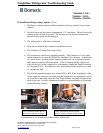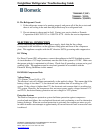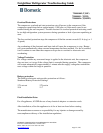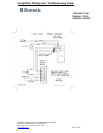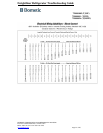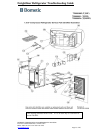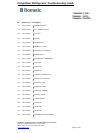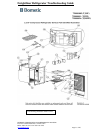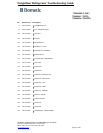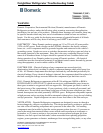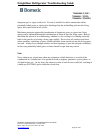
Freightliner Refrigerator Troubleshooting Guide
750000005 (TJ18F)
750000011 (TJ22F)
750000026 (TJ18FP3)
DOMETIC CORPORATION, ENVIRONMENTAL DIVISION
P.O. Box 15299 I Richmond, VA 23227 USA
Phone +804 746 1313 | Fax +804 746 7248
www.dometic.com Page 19 of 20
WARNING
Dometic Corporation, Environmental Division (Dometic) manufacturers of Dometic
Refrigerator products, makes the following safety warnings concerning the application,
installation, use and care of its products. Although these warnings are extensive, there may
be specific hazards which may arise out of circumstances which we have not outlined
herein. Use this as a guide for developing an awareness of potential hazards of all kinds.
Such awareness will be a key factor in assuring your SAFETY and comfort.
ELECTRICITY – Many Dometic products operate on 115 or 230 volt AC power and/or
12/24 volt DC power. Such voltages can be LETHAL: therefore, the chassis, cabinets,
bases, etc., on all components must be grounded together and connected to the vehicle’s
grounding system. Sparks can occur as switches, thermostats and relays open and close in
the normal operation of the equipment. Since this is the case, ventilating blowers for the
removal of hazardous fumes or vapors should be operated at least 5 minutes before and
during operation of any Dometic product or group of Dometic products. All electrical
connections must be covered and protected so accidental contact cannot be made by persons
using the equipment; as such contact could be LETHAL.
ELECTROLYSIS – Electrical leakage of any component can cause electrolytic
deterioration (electrolysis) resulting in vehicle component damage which could cause loss
of life. All Dometic components must be kept clean and dry and checked periodically for
electrical leakage. If any electrical leakage is detected, the component should be replaced or
the fault causing the leakage corrected before the component is put back into service.
GAS – Dometic Refrigerator components utilize R134a refrigerant, R409A or R404A,
R125/R143a/R134 (44%/52%/47%) which are non-toxic, nonflammable gases; however,
these gases contain no oxygen and will not support life. Refrigerant gas tends to settle in
the lowest areas of the compartment. If you experience a leak, evacuate all personnel, and
ventilate area. Do not allow open flames in the area of leaks because refrigerant gas, when
burned, decomposes into other potentially LETHAL gases. Refrigerant components operate
at high pressure and no servicing should be attempted without gloves, long-sleeved clothing
and eye protection. Liquid refrigerant can cause severe frost burns to the skin and eyes.
VENTILATION – Dometic Refrigerator components are designed to move air through a
heat exchanger by a blower or propeller fan. This design necessarily produces a suction on
one side of the air handling component and a pressure on the other side. Air handling
components must be installed so that the suction pressure action does not: (1) pressure an
area to the extent that structural failure occurs which could cause harm to occupants or
bystanders, or (2) cause a suction or low pressure in an area where hydrogen gas from
batteries, raw fuel vapor from fuel tanks, carbon monoxide from operating propulsion
engines, power generators or heaters, methane gas from sewage holding tanks, or any other






